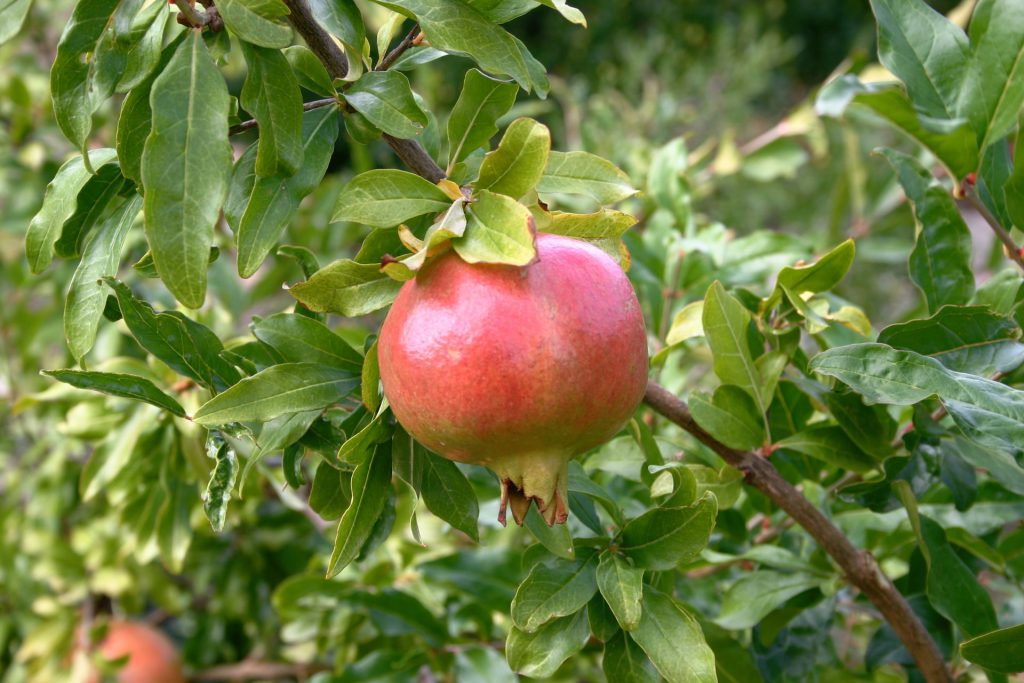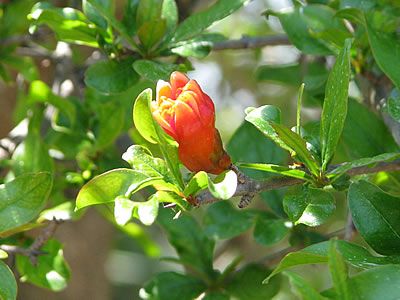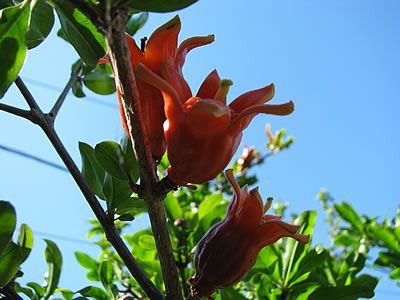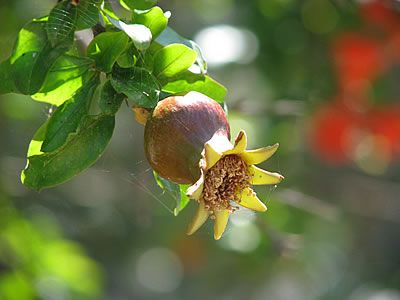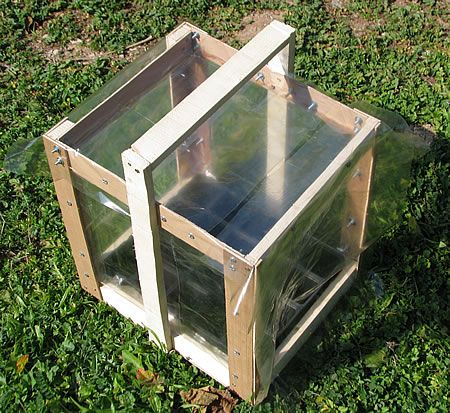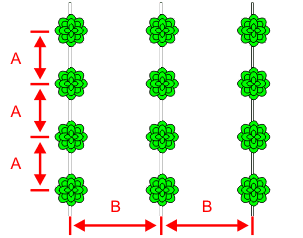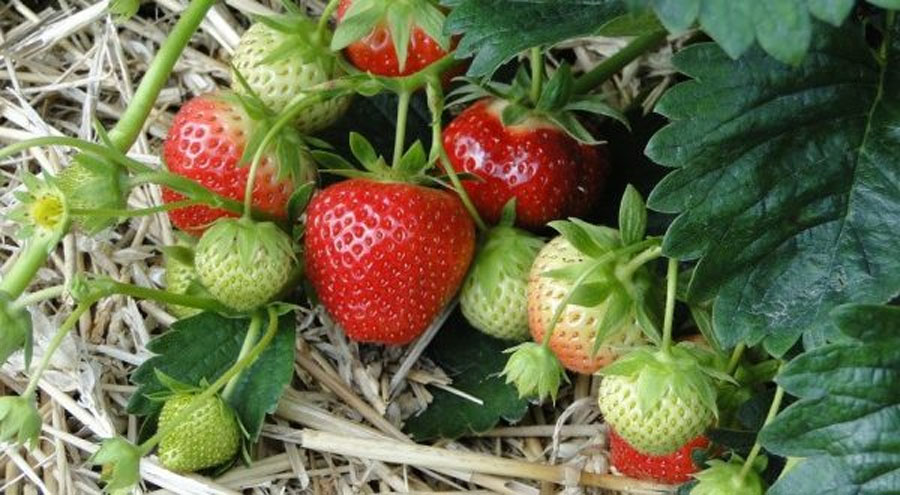How do I easy open the pomegranates? Pomegranates are a unique fruit with many nutrients. But they are difficult to open and eat if you don’t know the right way. In this article you will learn a lot of useful information about pomegranates and how to clean them easily!
Late September to early October is the season when most pomegranate varieties ripen. Pomegranate is an edible fruit that has started to become popular in recent years for its beneficial properties.
Traditionally, the pomegranate is a symbol of happiness and good fortune. Many New Year’s Day charms are pomegranate-shaped. As a symbolic gesture of fertility from Hellenistic times to the present day, we break a pomegranate on the floor at weddings and on New Year’s Day to signify abundance, fertility and good luck.
The Pomegranate Tree
Pomegranate blossom
The pomegranate is a shrub (although most of the time it has the appearance of a tree). It is a deciduous plant. The pomegranate is self-fertile. It does not need bees for pollination. A new pomegranate tree begins to produce fruit after the third year. The trunk of the pomegranate starts to branch from below. The pomegranate’s flowers are white or red, depending on the variety.
The flower begins to transform into a pomegranate
The pomegranate is a hardy shrub. It has no special requirements from the soil. It can be grown in dry, hard and gravelly soils. It even tolerates watering with brackish water. However, in order to obtain a satisfactory production and quality pomegranates, the soil should be rich in nutrients and sandy and watering should be regular.
The pomegranate starts to grow
The ideal climate for growing pomegranates is warm. It does not thrive in cold climates or in areas with fog and cold winds. The places where the pomegranates are to be planted should be sunny.
As far as fertilizing the pomegranate, the University of Arizona recommends 8-8-8 fertilizer. Other sources recommend fertilizer 16-16-16 In both cases, fertilization is done in two periods, November and March. Young plants (3 to 5 years old) need about 1 kilogram of fertilizer per tree, while older plants need 2 kilograms per tree.
How to prevent pomegranates from splitting
To prevent pomegranates from splitting (a common problem) , you should water the pomegranate tree regularly during the hot summer months. If you don’t, the sudden intake of water from the plant during the first autumn rains will cause the pomegranates to split.
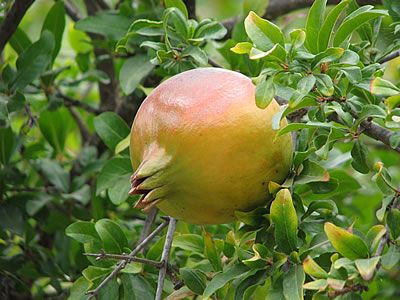
Propagation – sowing and planting pomegranate trees
The pomegranate is propagated in two ways. By sowing seeds and using cuttings.
Propagation by cuttings
The easiest way to propagate pomegranates is with a graft. The best time to take the graft is early summer.
1. The graft should be taken from a mature tree (older than 3 years old).
2. Take the graft from a point between the branches. Do not choose to take a graft from the ends of a branch (top or near the trunk).
3. Cuttings taken from young shoots require less effort to germinate.
4. Cut the graft diagonally from the tree. Use a sharp tool so as not to damage the pomegranate tree.
5. Remove the leaves from the graft.
6. Dip the end of the graft that you are going to put in the soil into rooting hormone. The rooting hormone will help the graft to establish roots.
7. Place the graft 2/3 of the way into a pot that you have placed soil and perlite in. The perlite helps retain moisture.
8. Water regularly until the root system has developed.
Growing new pomegranate plants from cuttings is the easiest way to propagate pomegranates.
Propagation of pomegranates from seed
If you want you can propagate pomegranate by seeds, the procedure is as follows:
1. Remove the pimples from the pomegranate and through each pimple take out the seed.
2. Allow the seeds to dry for several days.
3. Plant the seeds in a nursery, using special nursery soil.
4. The depth at which to place the seeds is about 1.5 cm.
5. Place the nursery in a warm place where the sun can see it.
6. Water regularly so that the soil is moist but not soggy.
7. The seeds will start to germinate in about 2 weeks.
8. When the plants reach a height of 6 to 8 cm, remove the weaker plants.
9. Allow the pomegranate plants to grow indoors until they reach a height of 60 cm.
10. Healthy plants will reach this height in about 2 months.
11. Now it’s time to transplant them into a larger pot and let them grow indoors or transplant them to their final garden location.
Pomegranate varieties
There are several varieties of pomegranate trees that you can purchase from nurseries and plant in your garden.
Foreign (to Greece) pomegranate varieties
Of the foreign to Greece varieties of pomegranate, the most popular are:
- Wonderful
- Granada
- Sweet
- Angel Red
Wonderful pomegranate variety
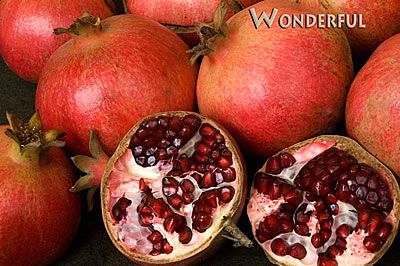
The Wonderful variety is the most widespread. It produces very large pomegranates with red skin and juicy contents. It reaches a height of 6 meters. Wonderful pomegranates ripen at the end of September.
Granada pomegranate variety
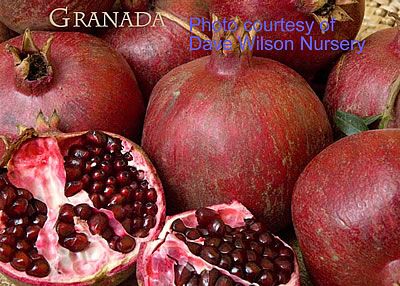
The Granada variety produces pomegranates that are smaller than those of Wonderful but much redder. Granada pomegranates ripen about a month earlier than Wonderful pomegranates.
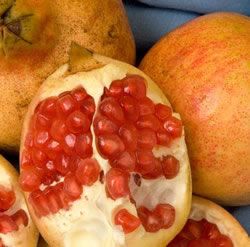
Sweet pomegranate variety
The Sweet variety produces the sweetest and juiciest pomegranates of all the varieties. The flesh is pink in colour. The height of the tree reaches 4 metres.
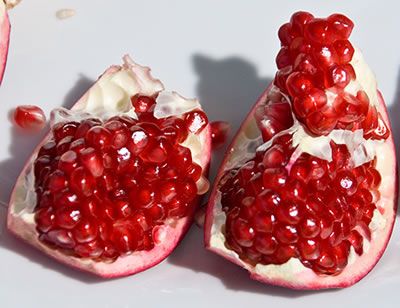
Angel Red pomegranate variety
Angel Red is a recent variety in Greece of pomegranate. It has started to become popular in recent years. The pomegranates it produces ripen in late August to early September, earlier than other varieties. Angel Red produces more pomegranates than any other variety. The fruit is bright red in color and very juicy. In fact, pomegranates of this variety are preferred for the production of pomegranate juice. Another advantage it has is that the seeds are usually soft, have a sweet taste and can be eaten.
Other foreign (to Greece) pomegranate varieties are:
- Balegal
- Cloud
- Crab
- Fleshman
- Francis
- Green globe
- King
- Phoenicia
Greek pomegranate varieties
Greek pomegranate varieties are divided into two major categories: sweet pomegranates and sour pomegranates.
Sweet Greek pomegranate varieties
- Politiki
- Caravelos
Sour Greek pomegranate varieties
- Leifania
- Tsiporodia
- Chotrorodia (Kambatika)
- Krasorodia
- Furs
- Xinorodia (Wild Kabatika)
Possible benefits of pomegranate
In 2010, 23 clinical trials were registered with the National Institutes of Health to examine the effects of pomegranate extracts, or from simply drinking pomegranate juice, on the following diseases:
- Prostate cancer
- Cancer of the prostate
- Diabetes
- Lymphoma
- Rhinovirus infection
- Common cold
- Oxidative tendency in diabetic blood flow
- Atherosclerosis
- Coronary artery disease
- Infant brain damage
- Blood transfusion for renal failure
In preliminary clinical research in humans, pomegranate juice was found to be effective in reducing the risk of heart disease, atherosclerosis and cardiovascular disease.
In a limited study in hypertensive patients, it was found that drinking pomegranate juice for two weeks led to a reduction in systolic blood pressure.
Pomegranate juice consumption intercepts viral infections, while pomegranate extracts have antibacterial activity against dental plaque.
Although research into the health effects of pomegranates is still in its preliminary stages, manufacturers of pomegranate products are using the results of the evolving research to promote their products.
The pomegranate in Indian Ayurveda
In the ancient Indian medical system of Ayurveda, pomegranate is used extensively as a source of traditional treatments for many diseases.
The ρινδ of the pomegranate and the bark of the pomegranate tree is used in traditional medicine to treat against diarrhea, dysentery and digestive parasites. The seeds and juice of pomegranate are considered beneficial for the heart and throat.
How do I open and eat pomegranates?
Opening and eating pomegranates has always been a problem for me. Until I watched the following two videos.
By opening the pomegranate the first way and removing the seeds the second way, I think you will get the best results.
Having removed the seeds from the pomegranate you can eat them immediately, put them in a blender and make juice from them, put them in the fridge (they will keep for 3 days), or put them in the freezer where they will keep for 6 months.
Photo by James Lee on Unsplash
Tags: POMEGRANATE • POMEGRANATE-TREE • SEEDS • SOWING

